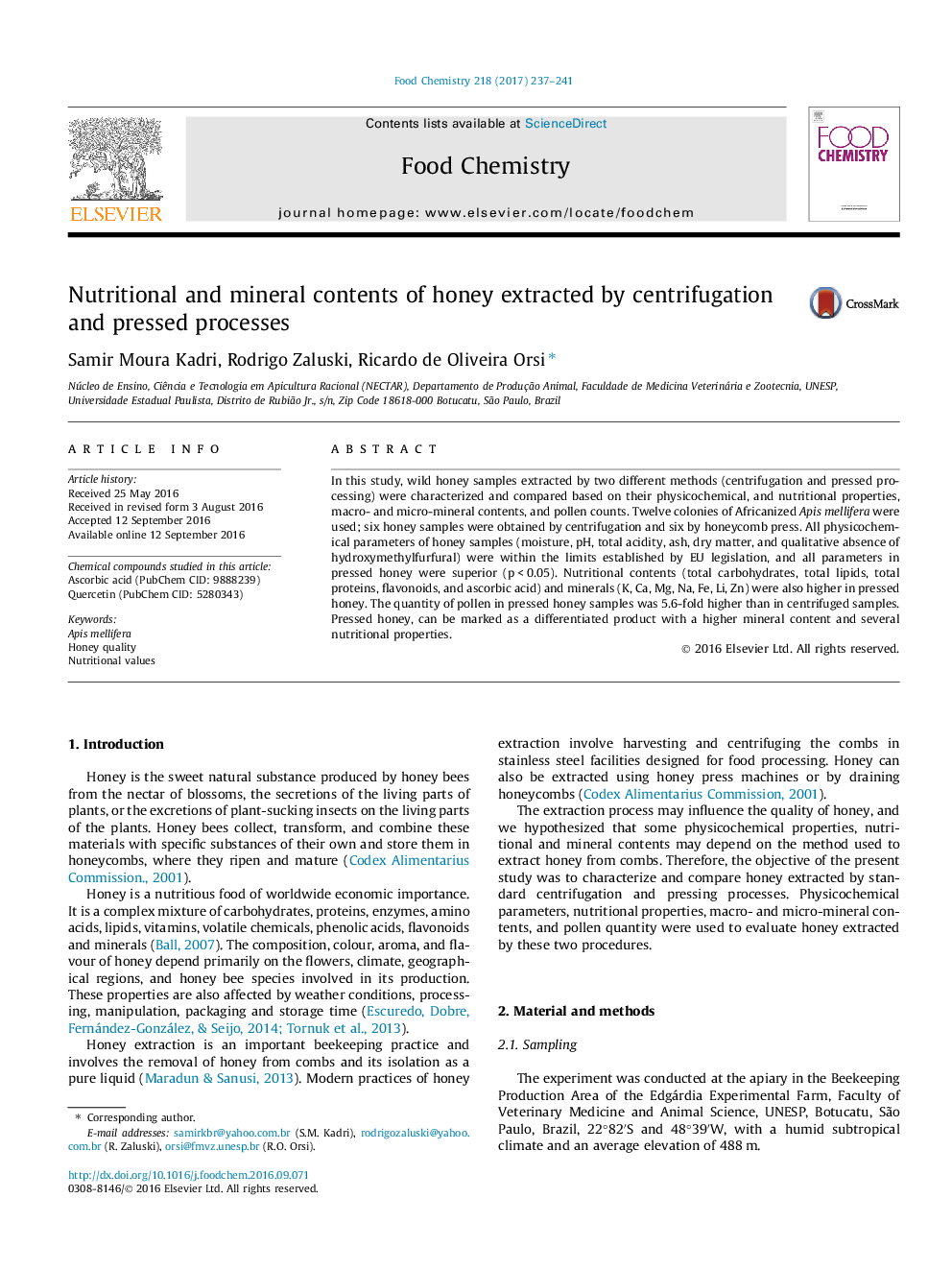| Article ID | Journal | Published Year | Pages | File Type |
|---|---|---|---|---|
| 5134060 | Food Chemistry | 2017 | 5 Pages |
â¢Honey extracted by standard centrifugation and pressed processing was compared.â¢Physicochemical parameters were within approved limits for commercialization.â¢Extraction process affects the nutritional and mineral contents of honey.â¢Pollen count in pressed honey was 5.6-fold greater than in centrifuged honey.â¢Honey extracted by pressed processing has higher nutritional and mineral contents.
In this study, wild honey samples extracted by two different methods (centrifugation and pressed processing) were characterized and compared based on their physicochemical, and nutritional properties, macro- and micro-mineral contents, and pollen counts. Twelve colonies of Africanized Apis mellifera were used; six honey samples were obtained by centrifugation and six by honeycomb press. All physicochemical parameters of honey samples (moisture, pH, total acidity, ash, dry matter, and qualitative absence of hydroxymethylfurfural) were within the limits established by EU legislation, and all parameters in pressed honey were superior (p < 0.05). Nutritional contents (total carbohydrates, total lipids, total proteins, flavonoids, and ascorbic acid) and minerals (K, Ca, Mg, Na, Fe, Li, Zn) were also higher in pressed honey. The quantity of pollen in pressed honey samples was 5.6-fold higher than in centrifuged samples. Pressed honey, can be marked as a differentiated product with a higher mineral content and several nutritional properties.
